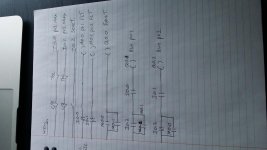Hi there,
Im Tom from Melbourne in Australia. Just getting started in PLC's. Im glad I found this forum.
My first little project is this one.
I have a situation where I need two pumps. One needs to be running all the time.(Picked with a selector switch)
If the Thermal overload (TOL) or Circuit breaker (CB) Trips, the other pump kicks in and then a fault light etc will come on until to tell the operator that an automatic switch has been made.
The part I am having trouble with is making the other pump come on as soon as the other has tripped.
Now I know this seems really basic. But I need to start somewhere.
Hope the information I have provided is enough for a start.
Thanks
Im Tom from Melbourne in Australia. Just getting started in PLC's. Im glad I found this forum.
My first little project is this one.
I have a situation where I need two pumps. One needs to be running all the time.(Picked with a selector switch)
If the Thermal overload (TOL) or Circuit breaker (CB) Trips, the other pump kicks in and then a fault light etc will come on until to tell the operator that an automatic switch has been made.
The part I am having trouble with is making the other pump come on as soon as the other has tripped.
Now I know this seems really basic. But I need to start somewhere.
Hope the information I have provided is enough for a start.
Thanks





